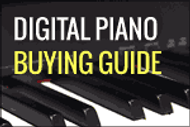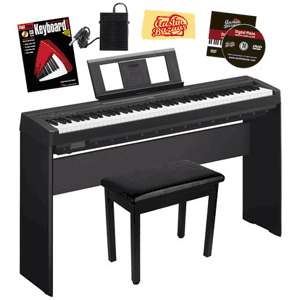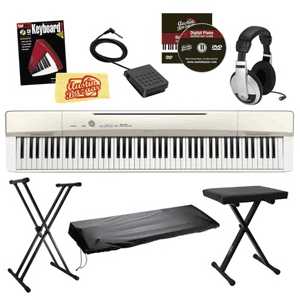Digital Piano and Keyboard Buying Guide
Posted by Austin Bazaar on 6th Feb 2015
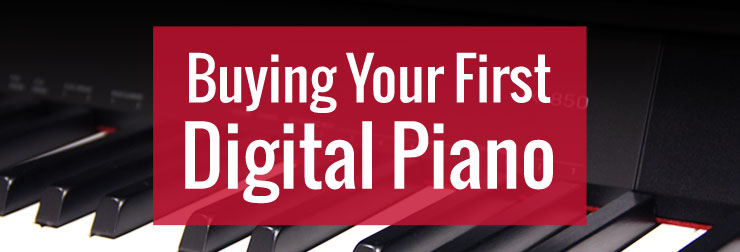
Looking to buy your first digital piano or upgrade your current keyboard? Our digital piano buying guide breaks down what to look for and our picks of the best digital pianos for beginners.
Different Types of Pianos
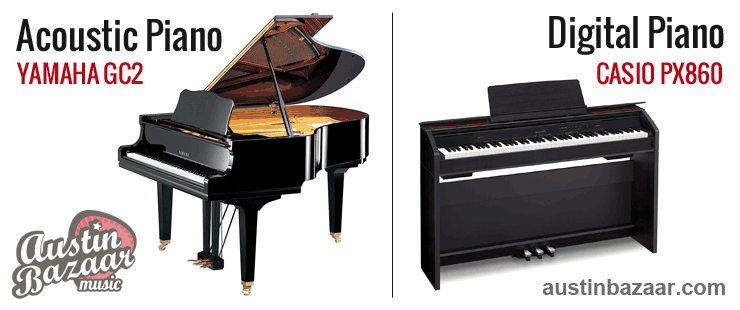
Acoustic Pianos produce sound via the natural acoustics of hammers striking strings within the instrument. These pianos are traditionally quite large and feature a full range of 88 keys. Some common sizes include the Grand Piano and Upright piano.
Digital Pianos have no strings or hammers, instead using digitally sampled sounds to imitate acoustic pianos. Digital pianos often feature “weighted” or “semi-weighted” keys that simulate the feel of an acoustic piano and different “voices” which give you the option to make your digital piano sound like other instruments (pipe organ, harpsichord, etc.) Some digital pianos come with furniture-style stands and built-in pedal systems to simulate the look and feel of acoustic pianos, along with helpful features like built-in metronomes for beginner players.
Keyboards & Synthesizers are similar to digital pianos, but typically produce computer-generated sounds via synthesizers (though some include sampled sounds). Keyboards typically do not have weighted key action of velocity-sensitive keys, but are popular with those who perform live or produce their own music. Many electronic pianos have less than 88 keys and feature slightly smaller keys than those found on acoustic pianos.
Workstation Keyboards combine advanced computing power with high-quality sampled sounds, putting an entire studio at your fingertips. These are great for engineering both classical music or laying beats.
Arranger Keyboards are electronic keyboards that feature “auto-accompaniment” in the form of backing tracks which automatically match your rhythm, tempo and key. These are useful for composers and songwriters in the sense that you can hear your music as it would sound being played by a full band. Arranger keyboards are also good for solo keyboardists who want to enrich their live performance.
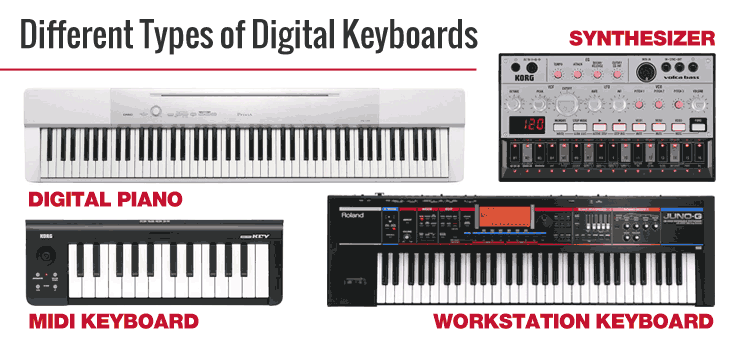
Why Go Digital?
- Size and Portability - Acoustic pianos take up a lot of space and can weigh hundreds of pounds, while many digital pianos and electronic keyboards are light and compact enough to transport easily.
- Easy to maintain - Acoustic pianos are delicate instruments, sensitive to changes and extremes in temperature and humidity. Digital pianos do not have these limitations and require little to no maintenance. Digital pianos also do not need to be tuned as acoustic pianos do. This saves the player time and money as acoustic pianos need to be tuned at least once a year, and tuning can cost up to $100 every time!
- Option to play silently - Some digital pianos and keyboards feature headphone jacks, which allow you to plug in and practice without disturbing anyone around you. This can be great for those who live in apartments or houses with thin walls.
- Computer connectivity - Many digital keyboards can connect to computers via USB, FireWire, and MIDI, allowing you to record your practice sessions and song ideas. Some keyboards also feature built-in recorders so you can produce and store high-quality audio files that you can later transfer to your computer.
- Many Voices - Digital pianos usually feature more than one “voice” giving you the option to play the full range of the keyboard with a more particular sound, such as Organ or Harpsichord. Electronic keyboards and synthesizers can typically produce a wider array of voices and allow for fine-tuned modulation of sound via sequencers, arpeggiators and samplers.
Top Things to Consider
Number of Keys - How many keys does the instrument feature? Keyboards can feature anywhere from 25 keys on small midi controllers to 88 keys as on a full-size digital pianos. We recommend that students and beginners start off with an instrument that has 88 keys (or as many keys as possible).
Action refers to the feel of the keys and how they respond to pressure. Weighted and semi weighted keys imitate the feel of a traditional piano, while hammer action adds actual mechanical hammers for an even more realistic response. “Synth action” is used to refer to light, spring-loaded keys.
Touch/Velocity Sensitivity refers to the ability of a keyboard to sense the force or speed with which a key is pressed and adapt the sound accordingly.
Portability - Where will you be playing your keyboard and how much space will it take up? It may make more sense to get a smaller or lighter model to easily transport your keys to gigs, jam sessions, or lessons.
Max Polyphony refers to how many notes can you play at once and still hear individually. Some pianos have a maximum polyphony of 1, while others have a max polyphony of 256! 128-note polyphony is good to aim for, and 32-64 is acceptable depending on what kind of music you will be playing.
Speaker system - Some digital pianos come with built-in speakers, while others simply have an output and require the purchase of an amplifier to be heard. Many models also feature a headphone jack so that you can practice silently.
Extra features - Built-in pedal systems, furniture-style stands, key covers and music holders can all be found on certain models. You can buy these separately, but it may be more convenient to get all in one go to make sure everything is compatible with the piano you are purchasing.
Recommended Brands & Models
Casio
Casio Privia Series Pianos include a range of models for different budgets and skill levels. These pianos can be bought as stand-alone keyboards or in packages that come with a stand and 3-pedal system that replicates the look of an acoustic piano. All Privia pianos feature realistic weighted key action and Casio's AiR sound source that generates an extremely realistic playing experience. The Casio Privia PX-160 Digital Piano has one of the best price points for quality and is easy to use, making it a great choice for beginners.
Yamaha
All of the Yamaha 88-key keyboards are equipped with world class samples and weighted keys that emulate the sound and feel of a real acoustic piano to a T. However many also come with excellent features that make learning fun, like dual-split mode, drum patterns and a USB port to record your practice sessions and song ideas. The Yamaha P115 Digital Piano is a popular, streamlined model that is suitable for beginners and pros alike.
Save Big with Digital Piano Bundles
If you're just starting out, you may want to consider one of our digital piano bundles, which come with essential piano accessories like stands and benches at a reduced price! You'll save time and money by getting everything in one go and ensure you're getting the best digital piano package to suit your needs.
Click any of the images below to find out about some of our most popular digital piano bundles:
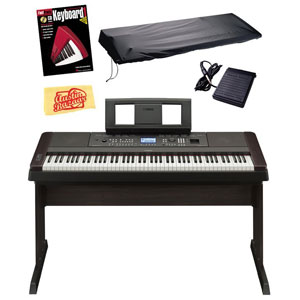 |


